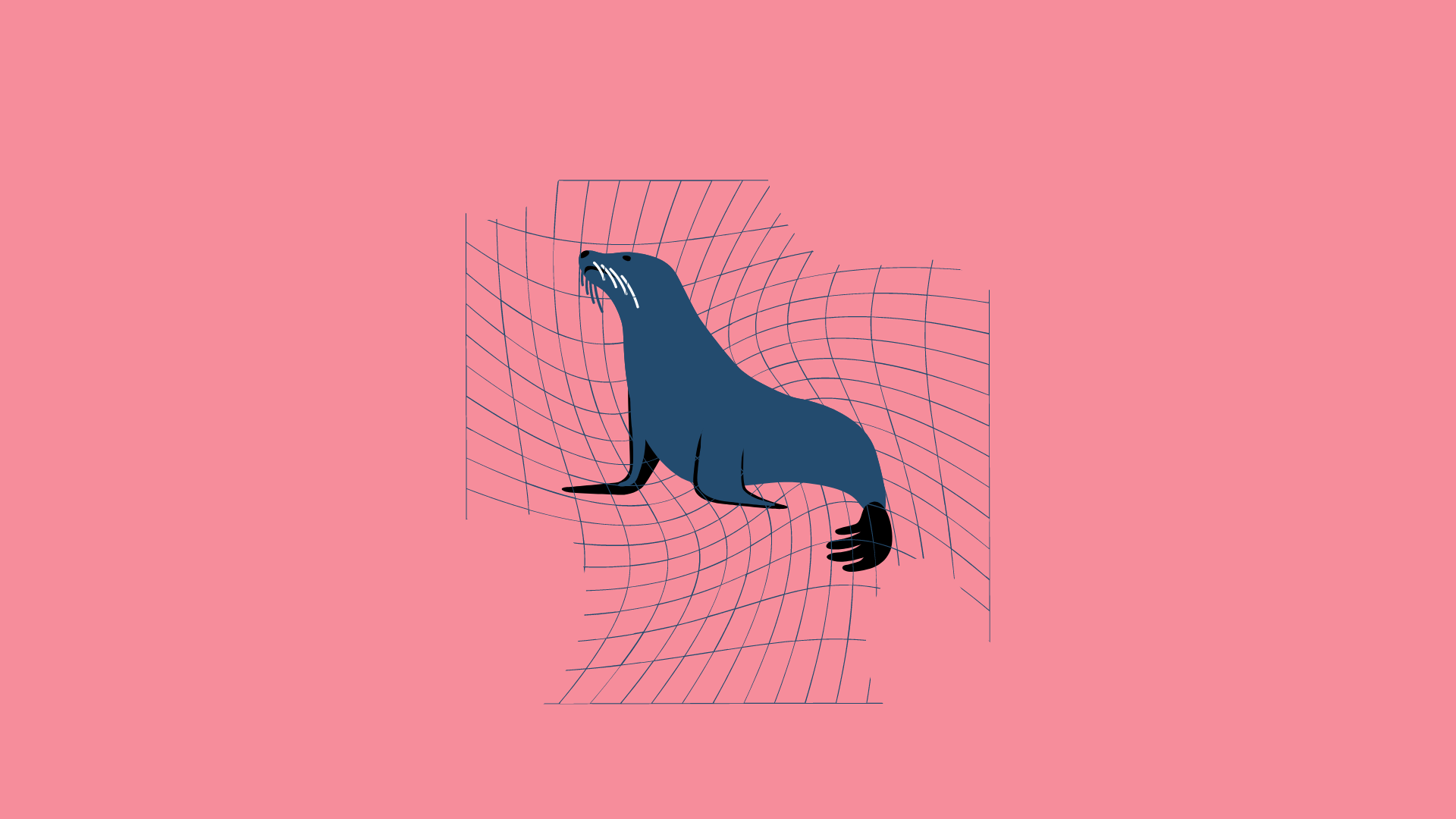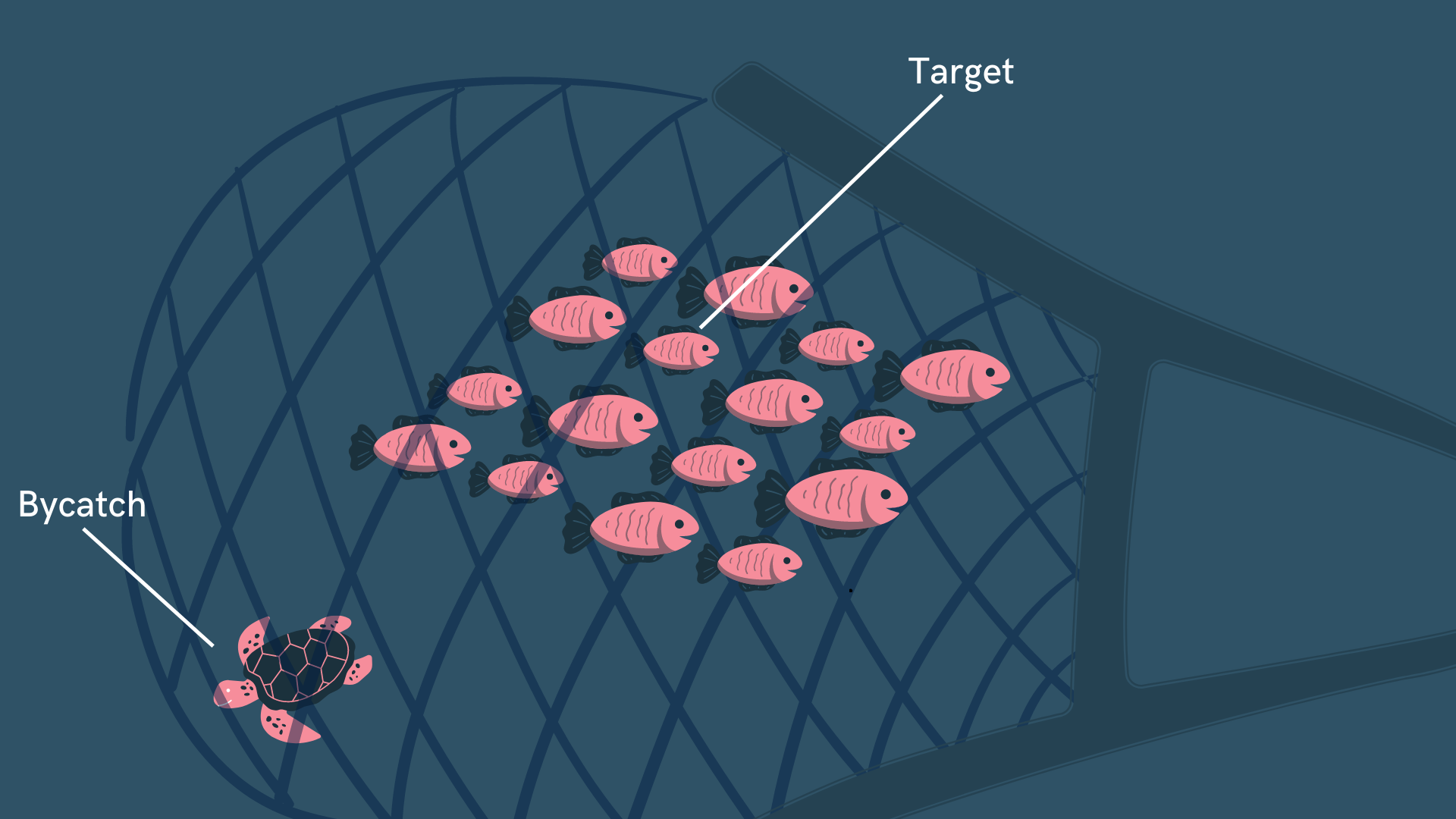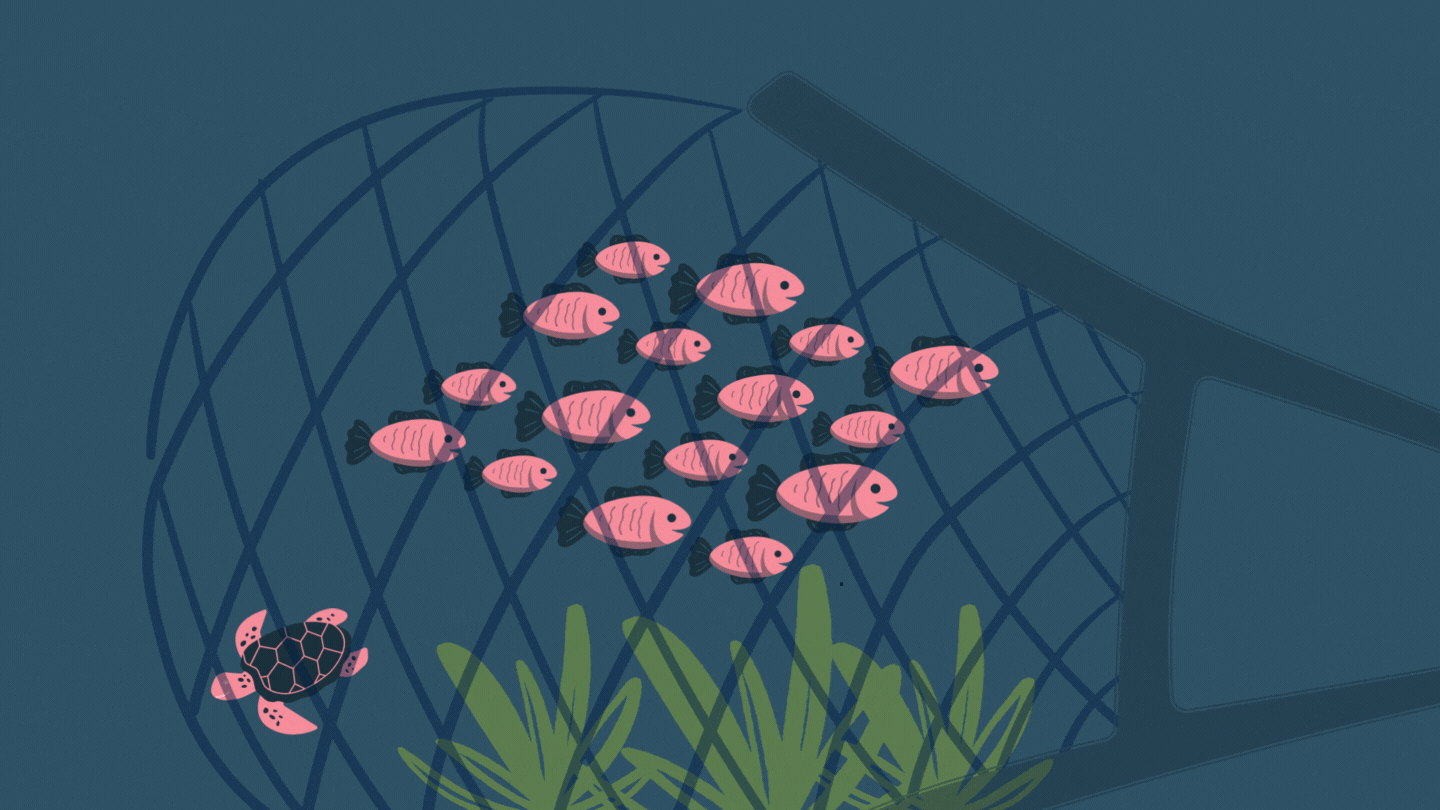Today, there are many threats to sea life. Global warming, plastic pollution, and oil spills. But out of all these threats, commercial fishing is the most prominent one. According to Greenpeace, commercial fishing contributes to over 86% of large plastic and 46% of all plastic in the Great Pacific Garbage Patch. Animals like sea turtles, whales, and birds often get caught in fishing nets and suffocate to death.

One of the biggest problems in commercial fishing is bycatch or the capture of non-target fish and other ocean wildlife. Bycatch has caused the decline of many fish populations around the world. In one report, Oceana states “as much as 2 billion pounds of fish are discarded by fisheries in the United States each year”.

Some competitions try to take out the apex predators on purpose. In certain tournaments, the biggest sharks caught and killed are rewarded with money. Many of the sharks targeted by such tournaments are listed as threatened. If the apex predators in a food chain are taken out, the entire food chain will eventually collapse.
One of the most dangerous commercial fishing methods is bottom trawling. Bottom trawling is a method of fishing that involves dragging heavily weighted nets across the sea floor to catch fish. It is a favored method by commercial fishing companies because it catches large quantities of product in one go. This method is extremely dangerous as it damages the sea floor, coral reefs, vital ocean plants, and other life. Many plants and animals accidentally caught in the large nets are thrown back into the ocean, dead. (Bycatch)

If life in the sea collapses, the effects on humans would be massive. Over 3 billion people who rely on fish would starve due to overfishing. There would be a struggle to breathe as the majority of oxygen comes from the ocean. Let’s do something about it.




